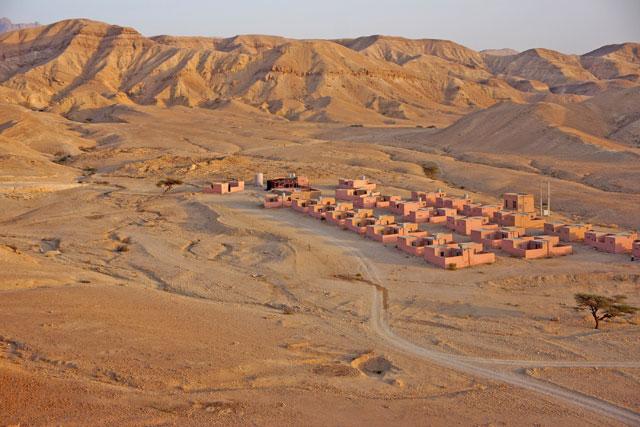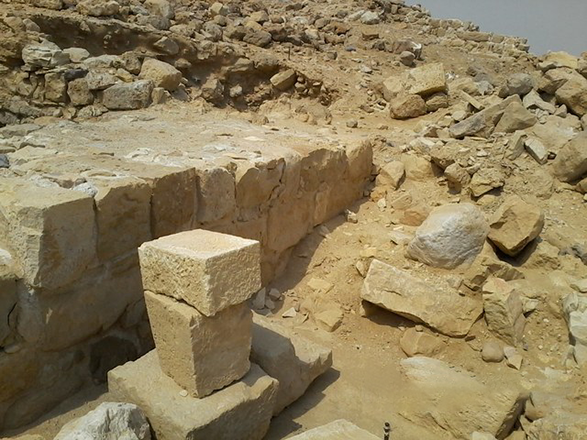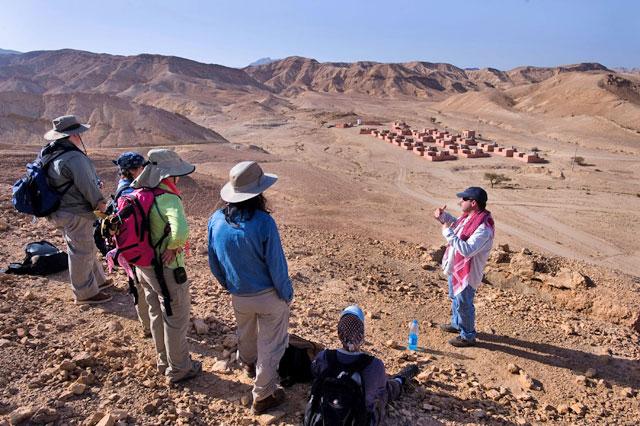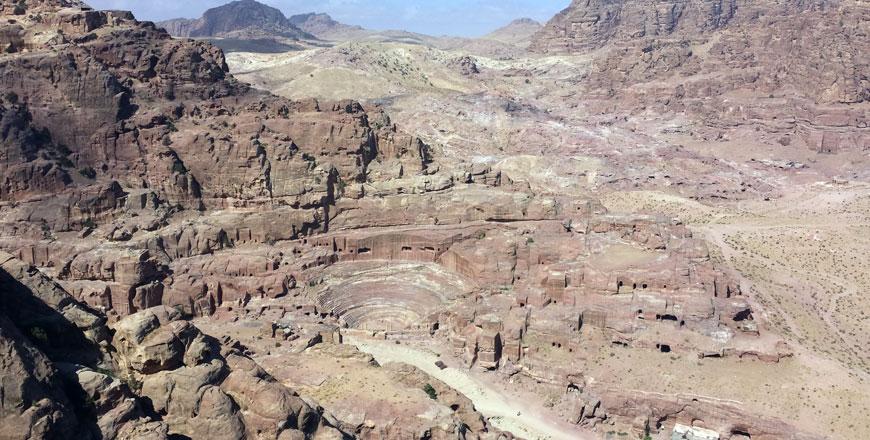You are here
American historian studies economic relations between Petra and its hinterland
By Saeb Rawashdeh - Jan 28,2018 - Last updated at Jan 29,2018

Overview of the ancient site of Bir Madhkur near the modern housing units (Photo courtesy of Andrew Smith II)
AMMAN — Located in Wadi Araba, 12 kilometres northwest of Petra, Bir Madhkur was a Roman fort and a settlement on the well-known Incense Route connecting Petra to the Gaza Port which was occupied during the Hellenistic (Nabataean), Roman, Byzantine and Early Islamic periods, an American historian said.
Economic relations between Petra and its hinterland still remain a field for further research, Andrew Smith II said, noting that “ancient cities depended on production within their hinterlands and Petra was no exception”.
In addition to a significant agricultural production, there was herding, copper production and the mining of semi-precious garnet, the scholar, who came from the George Washington University to research the site of Bir Madhkur, continued.
“The hinterland also benefited from the trade that passed through Petra,” Smith II explained, adding that several caravan stations such as Bir Madhkur supported the lucrative trade in frank incense and myrrh that was imported from Arabia.
In fact, Bir Madhkur was one of several caravan stations along the famed Incense Road that flourished under the Nabataeans, the historian emphasised, stressing “It is important to note that the entire Incense Route in the Negev of Israel has been inscribed as a World Heritage site. Therefore Bir Madhkur, as a link along the same Incense Road, merits some attention in that respect.”
During a critical period in the 3rd century AD, the site’s importance increased, while bigger urban centres declined due to the economic and political crises of the Roman Empire.
“With an army unit based there under Diocletian and afterwards, Bir Madhkur became a regional hub of commercial and administrative activity, as confirmed by our excavations there,” Smith II claimed.
Furthermore, it is also clear that the main purpose of the unit there was to revitalise agricultural production in the hinterland of Petra, he outlined, noting that the research team documented many farmhouses, terraces and massive irrigated field systems.
In terms of population, the historian stated that an estimate including soldiers, their families, and others in the local population would reach between 5,000 and 8,000 people.
Regarding connectivity between Petra and Bir Madhkur, the scholar said “several major routes existed, one of which is the famed Incense Road that leaves Petra to the south and emerges along the south side of Wadi Musa in Wadi Araba”.
“We restored one of the sections of that route in 2016 and we hope to return soon to explore the others. We had done this in collaboration with the American Centre of Oriental Research with funds from a USAID-SCHEP grant,” he stressed, adding that the team has also been working in collaboration with the Hashemite Fund for the Development of the Jordan Badia since 2008.
Related Articles
AMMAN — The site of Bir Madhkur is located in the Petra hinterland some 12 km northwest of Petra, near Wadi Araba.
AMMAN — Urbanisation and the formation of Arab communities during the late Roman and the Byzantine times is “a complex question” that would
AMMAN — A population boom that took place during a period of Nabataean, Roman and Byzantine rule must have been caused by multiple factors i

















